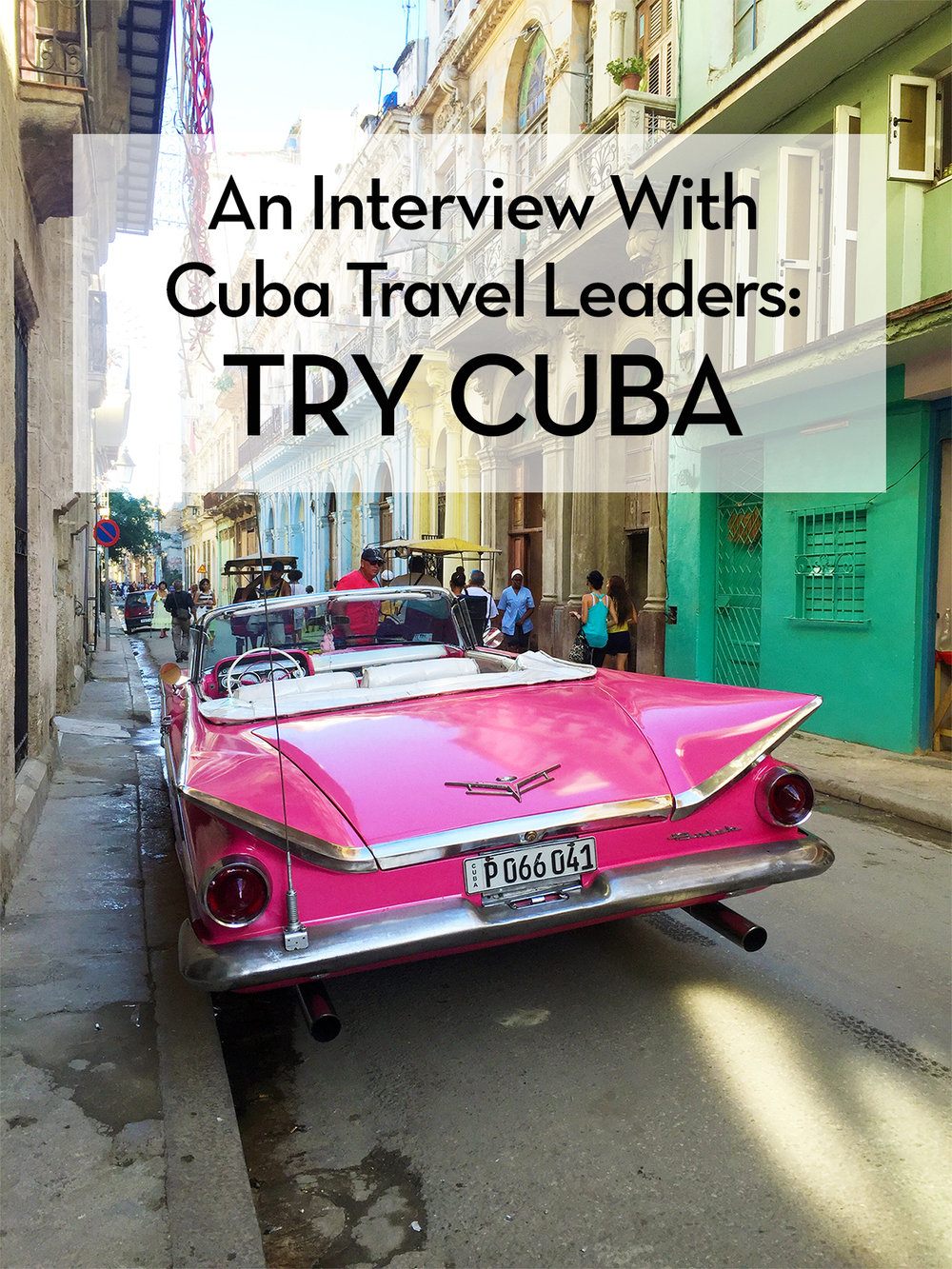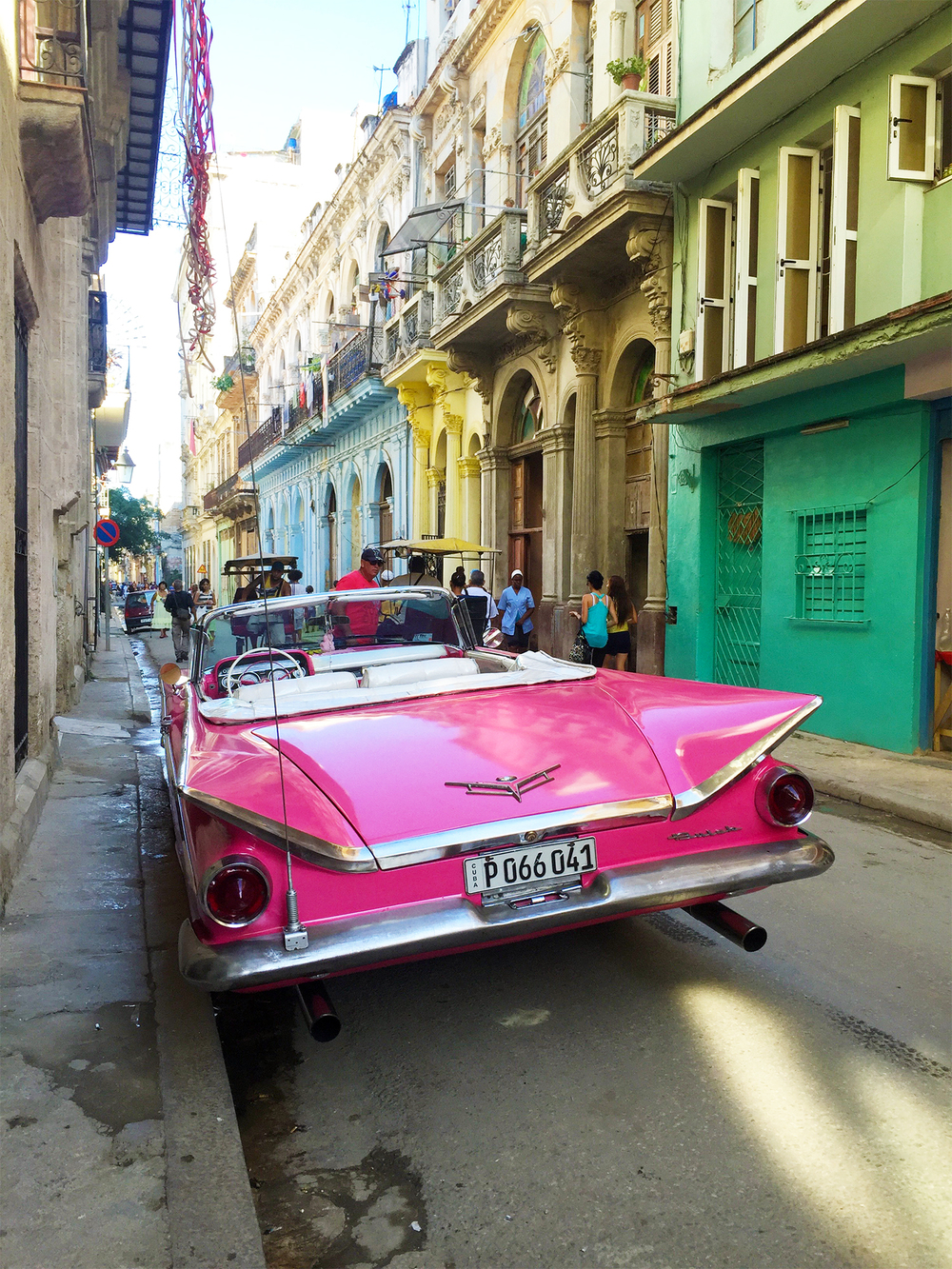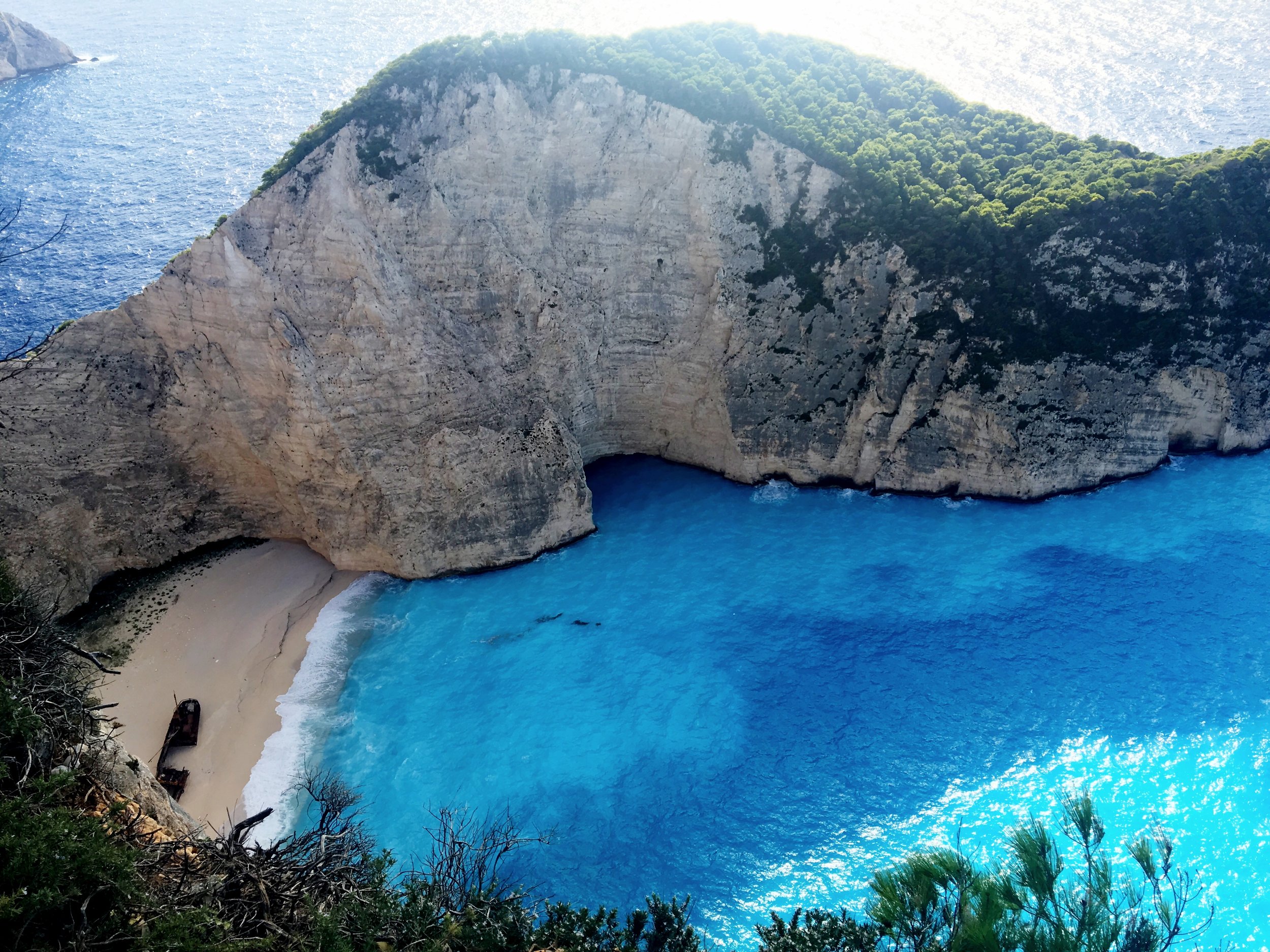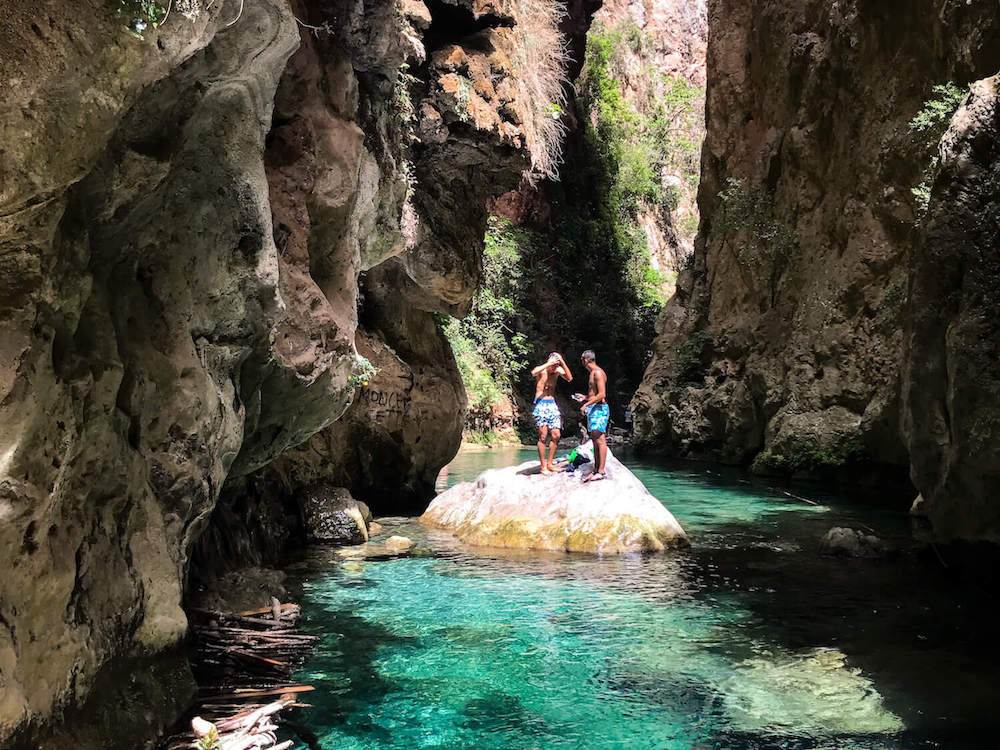An Interview with Try My Cuba
/Since 1962, The United States and Cuba have been in a stalemate. Once Kennedy signed the executive order for an economic embargo against Cuba, telephones, televisions and cars were harder and harder to import.
Fast forward more than 50 years, restrictions have been lifted, and Americans are able to step into a beautiful and energetic world, seemingly frozen in time, only 100 miles from the U.S. border.
With it's white sand beaches, delicious rum, Spanish colonial history, and authentic spirit not touched by recent technology, we've been fascinated with traveling to Cuba.
We recently spoke to the founders of Try Cuba, Brooke Bernold and Javier Barro, to get a better feel for the country and it's life pulse.
What attracted you most to Cuba?
Brooke -- I wanted to visit a country that is completely different than the United States. These days it’s hard to travel somewhere that has not been reached by the overwhelming forces of globalization. Cuba remains in many ways untouched by world markets, making it appear as though it is frozen in the 1950s.
On top of that, Cuba has long been considered a “forbidden territory” in the minds of most Americans, even though relations between the US and Cuba have improved significantly in recent years. This sensation of “otherness”, combined with its exotic, return-to-the-past aura, blended with its Caribbean atmosphere, make Cuba one of the most unique places you can visit.
It is amazing to find all of that and in just 45-minute flight from the U.S. mainland.
We hear the beaches are spectacular. What's your favorite beach in Cuba and why?
Brooke -- The Santa Maria beach is my favorite because it has pristine white sand and crystal clear water that everyone associates with the Carribean, and yet it is only located less than an hour away from the center of cultural life in Havana. There is nothing like a meal by the seaside. You can look out on the ocean and listen to local musicians singing and playing Latin classics as the fresh sea breeze caresses your face.
Javier -- For us Cubans, Varadero is "THE BEACH". You can walk into the water, see your feet and feel the smooth texture of the perfect sand. It is an incredible place even for us who are so accustomed to beautiful beaches.
What does everyone have to see or do in Cuba?
Brooke -- You definitely have to see the architecture in the plazas and Bellas Artes Museum with its' large collection of famous Cuban artists. And of course, you must ride down the malecón (the sea wall) of Havana in a classic car! But above all, the most gratifying aspect of visiting this island is getting to know the lively Cubans who inhabit the country. Without knowledge of the Spanish language, interaction with the locals can be difficult but at Try Cuba we solve this problem for you with our English-speaking local hosts!
Javier -- I love to go to "El Latino", the baseball stadium in Havana. It is like our Yankees stadium, but the experience of watching a baseball game in Cuba is very different from in the United States. People interact more during the games! It is more dynamic and fun for a spectator.
Additionally, I love Cuba jazz and you can find many places in Havana where you can enjoy "una descarga" (a jam session). Like Brooke mentioned, El malecón is also a special place for me, it is where the city is touched by the Carribean sea. El malecón is where Havana gathers to relax in the sun, listen to music with friends, take a stroll with a newborn child, or enjoy a romantic night.
What makes Cuban culture so special?
Brooke -- Cuban people live very differently from Americans. They do not have the same access to technology or material goods, and as a result, Cubans spend more time outside socializing. It is magical to walk through the parks and plazas of Havana and see them full of life -- people playing chess, having debates, laughing, signing and dancing. Cuban culture is alive!
Javier -- Culture is the way Cubans communicate their feelings. Painting, music, dance and literature are part of daily language for the island. There is a deep respect for the Cuban folklore and every element of our culture connects to it. You can see the culture everywhere in Havana when you visit a new art gallery or spend an evening in a restaurant watching groups sing and dance. In Cuba we like to grow, but maintain our past. We add new elements to our music without losing the roots that started with Chano Pozo and other great Cuban musicians.
What are 3 words to describe Cuba?
Brooke -- Vibrant, musical, exotic
Javier -- Salsa, rum, and cigars
What is your favorite Cuban meal?
Brooke -- Congri and ropa vieja. Congri is a delicious preparation of rice with black beans which imbues the white rice with flavor and color of the beans. Ropa vieja is a beef stew with vegetables that has been a traditional Cuban dish for hundreds of years. The best way to enjoy classic cuisine like this is at Havana's paladares. one of the reasons we decided to start Try Cuba is so we could allow newcomers to savor the meals in these private family restaurants, which are not always easily found.
Javier -- As a Cuban who grew up in Havana in the 1970's there is nothing like white rice with two fried eggs with an onion based sofrito (spices and garlic fried in oil to add taste). That meal and a fried plantain, is what my mother cooks for me every time I go home to visit. Another Cuban class staple is black beans with white rice and "lechon asado: (roast pork Cuban style). These flavors are the flavors of the island.
What is Cuban nightlife like?
Brooke -- The nightlife is energetic. Cubans love to dance, attend concerts, and play music. There are outdoor venues to listen to music, small clubs, and big dance centers. My favorite night spot is the Fábrica, as the locals call it for short. You can drink Cuba Libres until 3am, dance to the latest Cuban and International music, and view some edgy avant garde art all under the same roof.
"The bellows of the trumpet vibrate your mojitos!"
Javier -- Cabaret Tropicana has so much history and is the cornerstone of Havana nights. Aside from the cabarets, jazz is in the veins of every Cuban. My favorite jazz hall is "Jazz Club La Zorra Y El Cuervo" in Vedado. You enter through an old phone booth into a small basement venue. There is an immediate intimacy with the performers. The bellows of the trumpet vibrate your mojitos!
What's your fondest memory of Cuba?
Brooke -- Some years back I attended Jazz Plaza, the International Jazz festival in Havana, and met a family from Havana. I spent the entire festival going with them to see various performances throughout the city and then stayed with them through New Year's. This family shared their lived with me and allowed me to visit the local's Havana. Now each time I am in Havana I stay with my Cuban family and spend hours chatting with me "abuelita" (my Cuban grandmother). The life they shared with me is what inspired me to start Try Cuba with Javier, so more people could benefit from meeting locals during their visits to Cuba.
Javier-- Walking the old city of Havana (Habana Vieja) bring me a lot of memories. My mother used to work in a building near "La Plaza de Armas" and my brother and I would go there after school to visit her. When we are all in Havana we go to the plaza and stroll. I am still amazed by the incredible colonial architecture and the castles from when Cuba was a Spanish colony. These buildings remain in perfect condition.
What is the most surprising thing about Cuba?
"The lessons of living in the present moment and truly engaging with my surroundings are values I bring home after each visit."
Brooke -- The complete lack of stress in Cuba is infectious. A world without constant email access and Facebook updates is very relaxing! I find the slower pace of life mixed with the vibrancy of social interactions is very gratifying. The lessons of living in the present moment and truly engaging with my surroundings are values I bring home after each visit.
Javier -- For me, it is how little we have changed over half a century. The world today outside of Cuba is global and everyone is living in a high speed mode. When I return home, I am transported to a different world that has remained authentic throughout the years.
Why should everyone go to Cuba now?
Brooke -- Cuba has recently begun to open to American tourism in a way that was not possible for the last 50 years. Soon, this destination could loose some of it's charm and mystique (and authenticity) due to the massive influx of travelers. Visiting Cuba now, before the masses, will allow you to glimpse at the true Cuba and its' different lifestyles before it vanishes. Can you imagine being in a thriving city center with no billboard or advertisement? The Cuba of today is unique in the world, but with time and globalization, it will change.
Javier -- Cuba offers a unique opportunity to interact with people that have remained true to their culture. They are people who, regardless of the challenges faces, are optimistic and choose to enjoy life each day. I might even say that Cubans could serve as role models for us all, but maybe that is just my Cuban pride.
Try Cuba is owned and operated by Javier Barro, a Cuban national and cultural expert, and Brooke Bernold, an authority on Cuban travel. Try Cuba organizes legal travel under the people-to-people license for U.S. citizens. Try Cuba is known for it's diverse contacts among the Cuban people and their institutions. Try Cuba tours are dedicated to showing travelers the heart of Cuba through its people, music, and culture.
Their mission is to help travelers see the real Cuba before it changes forever.
***UPDATE: Try Cuba has recently split into two companies; Try Cuba & Try My Cuba
Save on Pinterest














